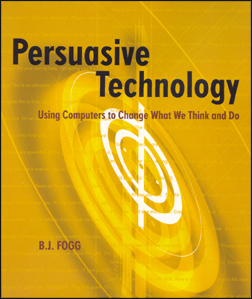 Woohoo! Stanford University’s education school faculty unanimously voted to open up their hallowed halls to minions like me who are always sniffing around trying to glean the latest and greatest research content on a variety of subjects impacting youth!
Woohoo! Stanford University’s education school faculty unanimously voted to open up their hallowed halls to minions like me who are always sniffing around trying to glean the latest and greatest research content on a variety of subjects impacting youth!
Research is pricey, no matter how you carve up the pie, whether it comes from the new YPulse Research division, MarketingSherpa youth studies, trend-tracking reports that slip behind closed walls quickly or even articles in Madison + Vine…so Shaping Youth tends to beg, borrow, and er…‘share’ by collaboratively splitting costs of research data. (Or by calling in favors via advisory board academics, doctors, industry pros with access to pricey journals and subscription content!)
“Only 15 percent of the 1,600 education journals published around the world provide free access to their content,” said Stanford University education professor Willinsky, who proposed this fabulous new policy shift to open access.
As one who wishes child advocacy resources and best practices could be shared like a giant data pool of open source ‘forward to a friend’ media, this Stanford news is a winner for ‘virtual reference’ queens like me.
From youth media tween trends to anti-obesity, preteen sports, eco-activism, behavioral interventions and new practices in mobile persuasion, I’m always trying to lift up the research rocks to reveal ‘what’s working and what’s not’ to guide our own actions and outreach without reinventing the wheel…
Open source feedback is key to harnessing programs that WORK.
For timeline context, Harvard open-sourced their school of arts and sciences and law reports earlier this year, and the 2006 DOE/fed pressure to share public information since the Federal Research Public Access Act (which frankly should have taken place more openly LONG ago considering we as a public are financing via taxes!)
Europeans have also shared educational research much more freely, but in the U.S.? Mostly appears Stanford and Harvard are taking the lead in the hopes of setting some policy for private University data-sharing…yay, for little guys like me…On the flip side…
What’s not to like? Well, if you’re a publisher, plenty, I suppose…
From a business standpoint, the American Association of University Presses, (representing 130 nonprofit academic publishers) reminds us there are embedded costs involved in copy-editing, designing, producing, and distributing the journals; and library subscriptions have paid for about 90% of these costs until now.
Free access means they’ll have to find other ways to cover costs, get underwriting, or ditch it altogether, as this 2007 statement on the issue conveys. Hmn…it’s those ‘other ways’ to cover costs that raise an eyebrow here…
After all, SOMEone has to pay to keep the lights on, and as we demo in Shaping Youth’s m-power kids counter-marketing games, statistics and research are only as objective as the source that they come from.
Whether it’s consortia sponsors of MIT Media Lab or Stanford Persuasive Technology Lab, we always ‘show and tell’ with kids so they learn how to ‘back end’ ALL data from various sources of sponsorship and funding to determine benign objectivity vs. spin-city in the irony realm…
Example? Pepsi funding the HFCS (high fructose corn syrup) studies, or their 2008 video game to fight obesity in Mexican kids south of the border. (Tamagotchi style no less; sigh, incredulity aside, this is true)
Mind you, the media/education data I’d REALLY like to get my hands on comes from the Stanford Persuasive Technology Lab…It “creates insight into how computing products – from websites to mobile phone software – can be designed to change what people believe and what they do.”
 Much like my Dark Knight post yesterday, Stanford Professor BJ Fogg admits this can be:
Much like my Dark Knight post yesterday, Stanford Professor BJ Fogg admits this can be:
…“a scary topic: machines designed to influence human beliefs and behaviors. But there’s good news.”
“We believe that much like human persuaders, persuasive interactive technologies can bring about positive changes in many domains, including health, business, safety, and education.”
“We also believe that persuasive technology can bring about world peace in 30 years. With such ends in mind, we are creating a body of expertise in the design, theory, and analysis of persuasive technologies, an area called “captology.”
Between BJ Fogg’s efforts at the Stanford Web Credibility Research Lab the Stanford Psychology of Facebook Class, (which I’ve been auditing when I can) and his new FB group to create Apps & Metrics (note techie sponsors here, media literacy buffs!) perhaps the most interesting one to me yet is his latest FB class for Peace Innovation…
Easy to see why I’m such a huge fan of open source information sharing to use the power of media for positive change, eh?
I mean, think on it…Could it be possible? Even plausible?
Can we ‘INVENT’ peace?’ In Web 2.0 style?
As Einstein said, “The significant problems we have cannot be solved at the same level of thinking with which we created them.”
I’m all for collaboration and access to powerful ideas that engage…whether it’s using media for education, or creating dialogue and deliberation in fun, favorable, new ways…
Meanwhile, it’ll be interesting to see how the new open access Ivy league education research plays out, as Education Week said,
“Under Stanford’s new policy, only the author’s final, peer-reviewed copy of the article would be posted online–in some cases, potentially months before the printed version becomes available.”
Shades of daily newspapers, hmn?
It makes me wonder whether we’re seguing to a new era of enlightenment…
…Where educators unite beyond the ‘publish or perish’ academic phenoms, drop the competitive fiefdoms, and work together for a greater good in a massive media mindshift toward open source collaboration.
We’ve seen it start to take shape out of necessity in the eco-movement, it only seems organic to see this grow via thought leaders in education, n’est ce pas?
Just imagine what could be accomplished with data swaps of best practices and outcomes…talk about ‘cut to the chase’ knowledge-harvesting! Whew. I’m in. Congrats Stanfordites, for opening up your world to ours…
Here’s to taking the lid off of simmering intellectual firepower…Now let’s see what we can get cookin’ with fresh ideas, new ingredients, multiple resources, stirred up in potluck style!
p.s. Anyone want to share the costs of Stanford’s Mobile Persuasion 2008 conference data this fall? I know our favorite innovators at HopeLab are thinking of attending per our UGC YPulse lunch roundtable at the mashup. (story upcoming on our health roundtable and some cool new anti-obesity techno gizmos blending media/marketing and kids’ fitness!)










As long as I’m on the topic of research…
This Entertainment Market Newsltr. just plopped in my inbox so here are some freebies to share:
“Volume 2 Issue 7
July 23, 2008
1. 94% of parents are present when their children purchase or rent videogames, according to the Entertainment Software Association (ESA).
2. While only 4% of consumers currently own an iPhone, 42% are considering purchasing one, according to a PriceGrabber.com survey.
3. Nearly one quarter of U.S. mobile phone subscribers (23.9%) have sent or received photo or video messages, reports comScore M:Metrics. Photo messaging is up 60% from 2007, with growth coming from all age demographics.
4. Four in ten bar patrons (42%) have watched TV in a bar in the past month, reports Arbitron.
5. U.S. consumers spent $10.1 billion on DVDs in the first half of 2008, roughly the same as in the first half of 2007, reports Video Business. Hollywood had been bracing for a sales drop.
Oh! And if you have bazillions to pay to source some of the the food shopping/issues with kids…this consumer network panel had some interesting anecdotes on the way we eat and what our expectations are (e.g. freshness of packaging, resealable bags, etc.)
“Profiles Of The U.S. Food Shopper” combines the best qualitative and quantitative research to give you a detailed understanding of U.S. food shopping trends, behavior and attitudes.
FREEBIE link to one-pager with some cool data here:
http://www.epmcom.com/html/consumer/food_shopper.html?PHPSESSID=b3a84e0fb90b2ec9f764188844c6c2b6